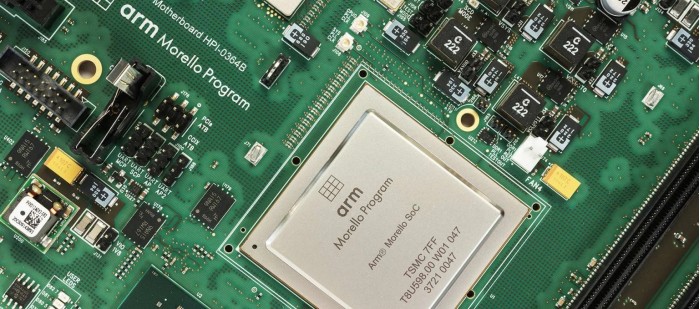Tech giants, governments, antitrust regulators, investors… all are focusing on the IPO of British chip design company ARM. Despite the recent sharp drop in tech stocks, SoftBank still plans to push ARM to go public by March next year. Although ARM is small in scale, it can become the object sought after by everyone. SoftBank buys ARM for $32 billion.
access:
Alibaba Cloud’s “Shadowless Cloud Computer” supports enterprises to quickly realize home office
At the end of May this year, Qualcomm CEO Christiano Amon told the Financial Times that he would form a consortium with rivals such as Intel or Samsung to take control of ARM or acquire it entirely. Nvidia has also tried to acquire ARM for $40 billion in 2020, but failed.

Some British politicians believe that ARM has an extremely important strategic position, so the government should hold “golden shares” and control it. Perhaps in response to this, it was reported on June 14 that SoftBank was considering London as a secondary listing location for ARM in addition to New York.
Analyzing ARM’s financials, investor interest in it seems puzzling. The company’s $2.7 billion in sales last year, up 35%, looks good but pales in comparison to its prominence. Based on Nvidia’s bid, the company’s valuation has grown by a quarter in six years. At the same time, Qualcomm’s market value has grown by half, and Nvidia has soared 13-fold despite recent market hits.
Why is there such a big contrast between the size of ARM and the strong interest in it? The Economist wrote that there are currently two explanations.The first is the universality of its products.
In 1990, ARM was spun off from British desktop maker Acorn Computers. After decades of development, the company’s chip architecture is now used by nearly every major tech company, and most modern phones have at least one chip based on the ARM architecture, making it the cornerstone of the $500 billion chip industry.The second selling point is potential.After years of experimenting, the company’s designs have crept into lucrative markets like PCs and data centers. From cars to light bulbs, all kinds of everyday objects can be turned into microcomputers with the help of ARM’s chip architecture.
Let’s look at generality first. Unlike Intel’s model of designing and producing chips at the same time, ARM only sells intellectual property. You can buy off-the-shelf chip designs for money, modify them as needed, and sell the finished chips.Apart fromauthorized incomeIn addition, ARM will take a small percentage of all chips produced based on its technologysales share. The company’s 2021 licensing revenue exceeds $1 billion, with a sales share of $1.5 billion.
In the context of increasingly complex and highly specialized chip designs, ARM’s off-the-shelf designs are popular. According to analyst firm New Street Research, ARM has a 99 percent share of the $25 billion smartphone chip market; its products are used in everything from drones to washing machines to smart watches. ARM says it has sold fewer than 2,000 licenses since its inception. However, shipments of chips based on the ARM architecture have exceeded 225 billion, and are expected to exceed 1 trillion in 2035.
With so many ARM customers, it’s no surprise that Nvidia’s deal has been boycotted. Simon Segars, who stepped down as ARM’s CEO this year, once called the company the “Switzerland of the tech industry” to highlight its neutrality. Geoff Blaber, an analyst at market research firm CCS Insight, said other chipmakers are concerned that ARM’s neutrality will be weakened if it is controlled by rivals. Antitrust authorities hold the same view, which is why they blocked the deal. Although Nvidia CEO Jen-Hsun Huang has repeatedly insisted that ARM will not be used to hinder the development of competitors, few people are really reassured.
One of the reasons Arm beats its opponents is becausePrice is low.New Street estimates that Arm takes a cut of just $1.50 on a high-end smartphone, possibly in cents for a mid-to-low-end model.
New Street analyst Pierre Ferragu (Pierre Ferragu) said that ARM has raised sales commissions several times, usually when new design architectures are released. Insiders said SoftBank wanted to further increase the commission ratio, but was opposed by ARM executives. They fear the move will anger existing customers and threaten ARM’s plans to enter new markets.
In 2020, Apple, which has long used the ARM architecture in the iPhone, began to use the ARM architecture design in notebooks and desktops to replace Intel chips. Although Apple doesn’t have as much influence in the PC market as it does in smartphones, it still gives ARM a vote of confidence in this unfamiliar field.
ARM is also aggressively grabbing lucrative markets such as servers and high-end computers. The market has been dominated by Intel for decades, but ARM has also made some impressive strides recently. Amazon’s AWS cloud computing unit now uses ARM-based Graviton chips. American data center chip company Ampere has also begun to design products based on the ARM architecture, and many companies engaged in processor development in professional fields such as network management have also taken the same measures. Market research firm TrendForce expects ARM processors to account for 22 percent of server chip installations by 2025.
Brembo said that backed by SoftBank’s big tree, ARM has invested a lot of research and development funds, which will help to maintain a leading position in technology. However, its charges are still limited due to the emergence of a new challenger, the RISC-V. This new chip architecture does not charge sales royalties and licensing fees at all. In 2020, Renesas Electronics, which had previously been authorized by ARM, announced that it will use risc-v in a new generation of products. Companies like Intel, Qualcomm and Samsung are also eyeing the technology. Regardless of ARM’s fate, whether as a public company, a state holding company, or controlled by a consortium of chip giants, it may continue its fate in the future: vital, but “insignificant by Silicon Valley standards” “.